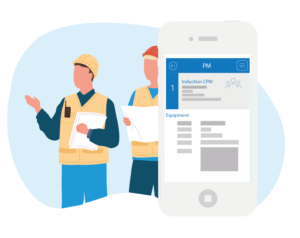Top 5 functional requirements to consider when evaluating lease compliance software
Companies tasked with ensuring compliance with ASC 842 or IFRS 16 or both have a daunting challenge before them. They must pay attention to three major areas; Data, Company Policy and Affected Disciplines, and lastly, Software.
Towards the end of 2017, a survey by PwC/CBRE highlighted that a significant majority (66%) (of affected companies) expect to make some type of a system change, with 43% indicating they will implement a new lease management system.
Implementing a new system can be a daunting but rewarding challenge. With incomplete solutions, such as spreadsheets or disjointed applications, real estate and accounting teams will expend a substantial amount of time integrating and managing their data across separate systems during the complex countdown to compliance.
When evaluating a lease accounting software solution, there are a few considerations which companies need to address in order to perform a comprehensive and effective review from a due diligence perspective.
1. FASB vs IASB: Does the software provide complete and accurate coverage from both a FASB and IASB perspective?
The FASB and IASB boards’ original mission was to standardize both ASC 842 and IFRS 16 globally and adopt a single lease accounting standard. Unfortunately, preparer comments from both sides of the pond influenced the boards and they eventually were forced to agree to disagree on certain items. This resulted in approximately 75% of the guidance being very similar and the other 25% being different. The treatment for Lessee leases is a classic example which jumps off the page. Clients need to ensure that both standards are being followed and that the differences are accurate.
2. Lessor vs Lessee: Does the software support both Lessor and Lessee accounting?
Although this may seem like a no brainer, some software firms have opted to simply support the Lessee population. This is due to the fact that the accounting for Lessor’s did not change dramatically although it did in fact require modifications in order to by consistent with ASC 606 (Rev Rec) standard. Secondly, the accounting for Lessor’s was somewhat complicate again due to the differences between the FASB and IASB. Specifically, the FASB supports Operating, Direct Financing and Sales type classification of leases while the IASB only supports Operating and Financing classification of leases. The detail differences hide the devil
3. Subleases: Does the solution support Sublease and Intercompany Lease transactions?
Sublease accounting are an integral part of a full solution although often overlooked by software developers. The primary reason for being overlooked is the fact the sublease accounting requires a modification or remeasurement of the Head Lessee’s ROU asset as well as establishing a Sub Lessor entity. Modifications in and of themselves are complicated considering the different options available to FASB vs IASB, but adding an internal Sub lessor to the mix is unachievable by many software providers.
4, Multiple Transition Options: Does the solution support the various divergent Transition Options available under ASC 842 and IFRS 16?
The FASB guidance originally offered one Modified Retrospective transition approach which required filers to restate the 2 comparative years in the year of adoption. Later, the Board decided to provide an expedient approach which did not require the restatement of the 2 prior years and record all of the activity in the year of adoption.
The IASB guidance offered a full retrospective as well as 2 modified retrospective approaches which made the accounting more complicated.
Most companies will opt to adopt the transition approach which does not require restatements however after running the numbers, some Companies will see the economic soundness and comparability benefit of going back in time to restate.
5. Concurrent Sub Ledgers: Does the solution support the concurrent accounting of both FASB and IASB on a go forward basis?
Once Companies have completed the Transition and Adoption process, some may be faced with the task of having to file their financial statements under both the FASB and IASB standards. This situation is particularly applicable to conglomerates’ which support multinational operations.
Next Steps
If your organization is seeking a software partner to meet your lease compliance needs, we encourage you to contact us to arrange a software demonstration.
6 Ways Tenants Overpay on Leases
Optimize your lease agreement to avoid hidden costs and maximize value. Many commercial real estate tenants unknowingly overpay on their leases, a costly oversight that can erode business profitability. Hidden rebates, complex terms, and subtle claus…

